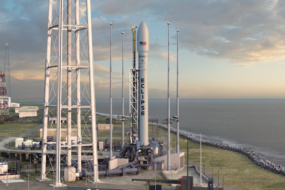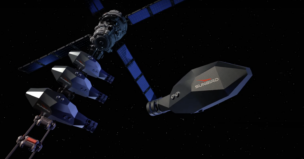NASA and DARPA have chosen Lockheed Martin ($LMT) to develop the first nuclear-powered Demonstration Rocket for Agile Cislunar Operations (DRACO) rocket for a demo as early as 2026, the trio announced Wednesday. The contract is valued at $499M, with funding split evenly between the two government agencies.
Lockheed Martin will build the spacecraft, and BWX Technologies will develop the nuclear fission reactor that will power the engine.
DRACO 101: NASA joined DARPA’s DRACO program in January to support the development of a nuclear-powered engine. NASA seeks to incorporate nuclear propulsion for future missions to Mars (Oppenheimer would be proud).
“This demonstration will be a crucial step in meeting our Moon-to-Mars objectives for crew transportation into deep space,” said NASA official Pam Melroy.
It’s a nuclear world: The Lockheed spacecraft will be powered through nuclear thermal propulsion. NTP is the process in which a nuclear reactor acts as an engine combustion chamber, adding thermal energy to hydrogen propellant, causing it to expand through a nozzle and create thrust. Nuclear-powered rockets can be two to five times more efficient than legacy chemical systems.
The increased efficiency would reduce our travel time to Mars from seven months down to a few months.
Detailing the mission:
- The spacecraft will be loaded with 2,000 kg of hydrogen and 100 kg of low-enriched HALEU uranium.
- NASA will launch the Lockheed spacecraft in a standard-size fairing aboard an NSSL vehicle (Falcon 9 or Vulcan Centaur).
- The DRACO team will incorporate a fail-safe poison wire which can absorb neutrons and prevent a chain reaction in case the launch fails and the reactor falls in the ocean.
- The reactor will not be turned on until it reaches a nuclear-safe orbit between 700 and 2,000 km above Earth.
Once turned on, the DRACO team is hoping to achieve 800+ seconds of specific impulse (isp), the measure of rocket efficiency. For comparison, SpaceX’s Raptor engine has <400 seconds of isp.
“These more powerful and efficient nuclear thermal propulsion systems can provide faster transit times between destinations. Reducing transit time is vital for human missions to Mars to limit a crew’s exposure to radiation,” said Lockheed VP Kirk Shireman.




